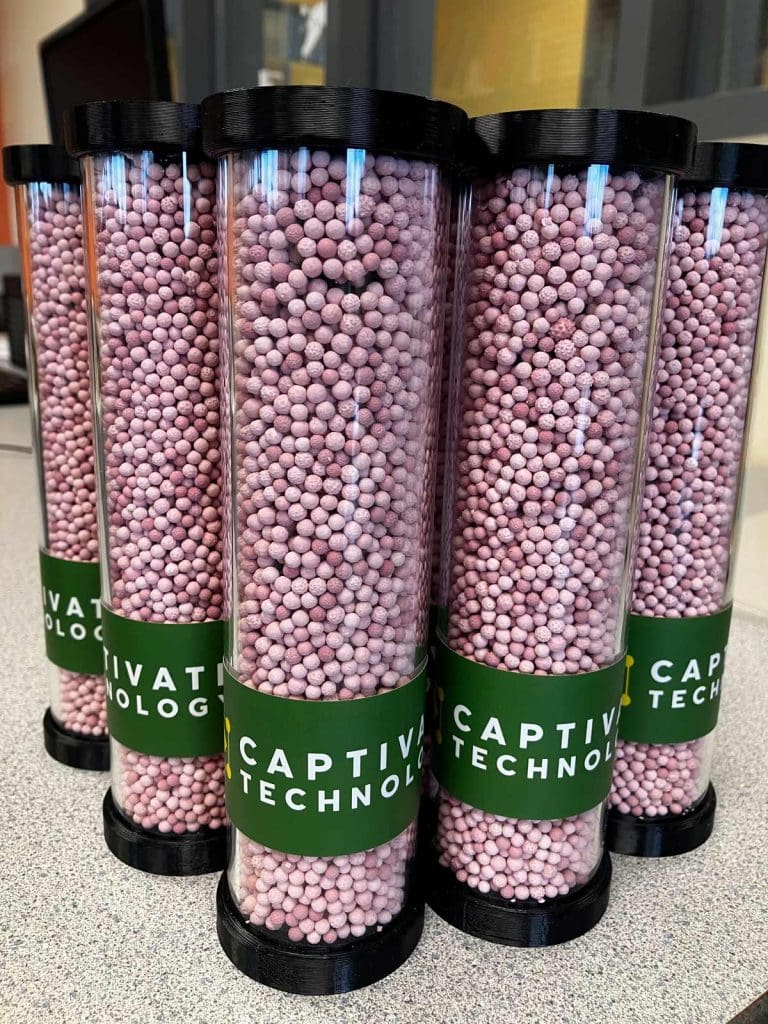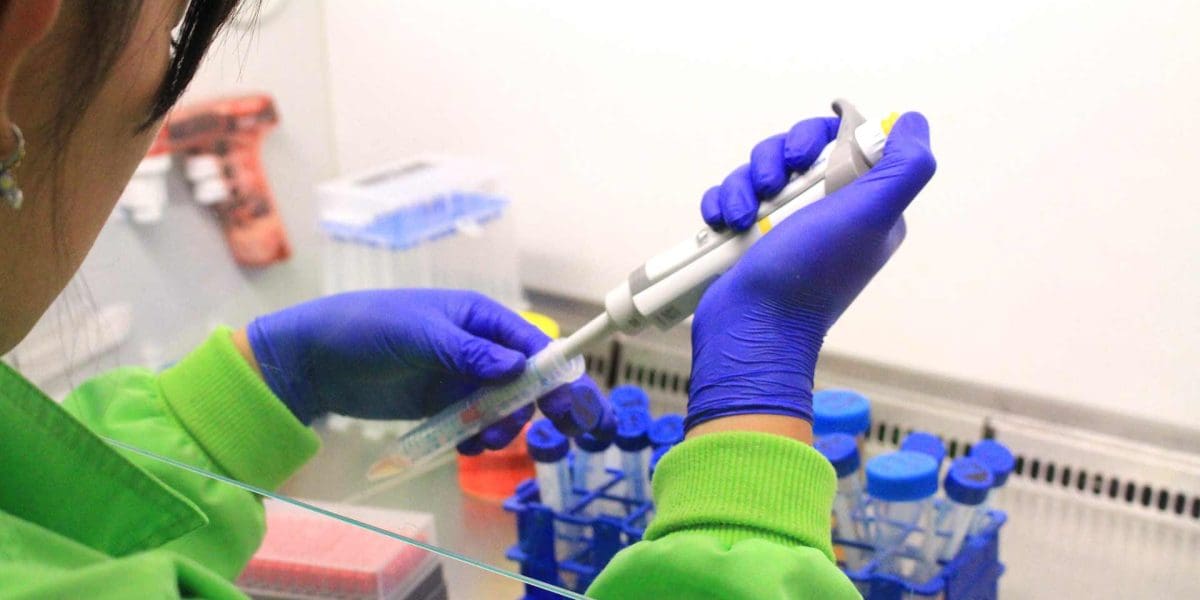Six Kiwi Startups Ready For Global Impact
New Zealand’s startup scene has always been a bit of an underdog story. We might not have the size or the capital of Silicon Valley, but we do have a knack for punching above our weight. Our innovators work close to the problems they are solving, build lean, and think globally from day one. The result is a steady stream of companies that quietly build tech with world-changing potential.
In this collection, we meet six Kiwi ventures tackling some of the biggest challenges of our time. From removing carbon from the air to predicting life-threatening illnesses before they strike, from rethinking how we grow our protein to finding new ways to keep the world cool without burning more energy. Each is a mix of scientific rigour, technical genius and the kind of stubborn determination that tends to come from building a business at the bottom of the world.
Captivate
Carbon dioxide is a problem we cannot ignore. It is invisible, stubborn, and has been warming our planet for generations. The world has been chasing solutions for decades, but most carbon capture technology has been expensive, energy-hungry, and environmentally unfriendly. Captivate is proving it does not have to be that way.
The company’s core technology, MUF-16, was born in the lab of Professor Shane Telfer at Massey University. MOFs or “metal organic frameworks”, are a class of materials built to trap specific molecules. In this case, MUF-16 is like a sponge with a singular obsession: CO₂. It ignores other gases, capturing only carbon dioxide, which can then be simply released under vacuum and reused without the material losing effectiveness.
Telfer’s background is in materials chemistry, not industrial engineering. But he knew the potential was huge. To take MUF-16 from academic curiosity to commercial product, he brought on business development lead Nigel Campbell. Together, they started Captivate with the goal of making carbon capture affordable, scalable, and practical for in the real world.

Traditional carbon capture systems often rely on amines. They work, but they corrode equipment, require high regeneration temperatures, and are costly to run. MUF-16 needs far less energy, is resistant to contamination from water vapour and other impurities in the gas stream, and produces CO₂ clean enough to be sold to other industries. That turns a costly waste stream into a potential revenue source.
Captivate’s approach is modular. Units can be built to suit a geothermal plant, a cement factory, or a biogas facility without reengineering the entire site. This adaptability is a major selling point.
The company’s early trials are showing strong results, and their focus is now on scaling production and proving the technology in different industrial environments.
For Telfer and Campbell, the mission is about global impact and they are well on track already.
IASO
In the ICU, minutes can mean the difference between recovery and tragedy. Acute Respiratory Distress Syndrome (ARDS) is one of the most dangerous conditions critical care teams face, often developing quickly and with high mortality rates. Auckland-based IASO is using AI to give doctors more time to act.
IASO’s founders, a mix of clinicians, engineers, and data scientists, saw that existing monitoring systems often spot ARDS only after it has taken hold. Their platform uses machine learning to analyse streams of patient data in real time, identifying subtle patterns that indicate trouble ahead.
By predicting ARDS hours or even days before traditional methods, IASO gives doctors a crucial head start. That extra time can be used to adjust ventilation, manage fluids, and begin therapies that reduce the severity of the syndrome or prevent it altogether.
The system is designed to integrate with existing hospital equipment and electronic health records, minimising disruption. Alerts are concise and actionable, helping clinicians focus on what matters most.
Early trials have been promising, and the company is now preparing for larger-scale validation and regulatory approval. They are also exploring how their predictive framework could be adapted for other critical conditions, such as sepsis and cardiac arrest.
Funding has come from healthtech investors, innovation grants, and hospital research partnerships. The goal is a Series A raise to support commercial rollout, with interest already coming from international healthcare providers.
For ICU teams, more time can mean more lives saved. IASO is building a tool that could change the way critical care is delivered, starting in New Zealand, but with the potential to make an impact anywhere patients need urgent, proactive treatment.
PhaseFoam
Keeping goods cold is deceptively hard. Cherries headed for export, vaccines bound for remote clinics, temperature-sensitive electronics, all rely on cold-chain systems that burn a lot of energy and create a lot of waste. Refrigerated trucks and single-use polystyrene boxes have been the default for decades, but they are expensive, resource-heavy, and far from sustainable. PhaseFoam has set out to reimagine the whole approach.
Born in 2022 as a spin-out from the University of Auckland, with Mohammed Mehdi Farid serving as CTO and founding director, and his son, Sam Farid, stepping in as CEO and co-founder, PhaseFoam’s tech is clever yet deceptively simple: reusable foam panels infused with phase-change materials (PCMs) that absorb and release heat slowly over time, like a temperature-regulating thermal blanket. It keeps chill-dependent products safe without constant power.
For fresh dairy distributors, PhaseFoam enables precise temperature control during delivery without the need for diesel-powered, polluting refrigeration systems. For pharmaceutical distributors, it offers a way to get vaccines into rural areas without risking temperature breaches. Even the building industry sees potential for PCM panels in regulating indoor temperatures, reducing heating and cooling costs.
Commercial interest has been strong. With support from WNT Ventures and Auckland UniServices, PhaseFoam has moved from prototypes to pilot programs with partners in horticulture, logistics, and healthcare. The focus now is on scaling production and refining the design for different use cases. By reducing reliance on powered cooling, PhaseFoam can cut energy costs and emissions, while also slashing the waste generated by the cold chain. It is not trying to replace refrigeration entirely, but to make the whole system more efficient. If the company can scale successfully, its panels could become a standard part of sustainable logistics worldwide.
GoodAir
Breathing is automatic, until it is not. For millions of people, blocked nasal passages are a daily battle. Medications can help, but sprays can cause rebound congestion, and antihistamines often come with unwanted side effects. GoodAir is offering a completely different path to relief: a small, drug-free device called Goodair Nosebuds.
The idea comes from Dr David White, Associate Professor at Auckland University of Technology and co-director of the Biodesign Research Hub. After 25 years of research into nasal breathing and its links to overall health, White developed a tiny wearable device that uses micro-rotors to gently stimulate the nasal passages. This encourages the body to clear congestion naturally and increases nitric oxide production.
Nitric oxide plays a surprisingly big role in human health. It widens blood vessels, improves oxygen uptake, and even has antimicrobial properties. Boosting it through better nasal breathing can improve sleep, athletic performance, mood, and immune response.
Goodair’s device is designed to be worn for just 10–20 minutes a day. It is comfortable, reusable, and avoids the side effects of medication. In clinical trials, Nosebuds have been shown to improve airflow and help users develop better breathing habits over time.
Goodair has raised over $1.6 million from WNT Ventures, Callaghan Innovation, and KiwiNet to fund development and testing. The company is preparing for market launch, with early interest from allergy sufferers, frequent travellers, and athletes looking for non-drug performance aids.
The global respiratory devices market is worth billions, and there is a growing demand for drug-free solutions. Goodair is aiming to position Nosebuds as both a medical device and a wellness product, opening the door to multiple sales channels.
If successful, the impact could be broad. For individuals, it means easier breathing and better quality of life. For health systems, it could reduce reliance on medication and associated costs. And for Goodair, it could put a little piece of New Zealand innovation into noses around the world.
Opo Bio

In ten years, the meat on your plate and collagen in your cosmetics might not come from a farm at all. It could be grown from cells in a lab, without a paddock, a herd, or the environmental cost of traditional livestock farming and Auckland-based Opo Bio is working to make that future a reality.
Founded in 2022 by CEO Olivia Ogilvie and Chief Scientific Officer Dr Laura Domigan, Opo Bio does not produce consumer products like meat or makeup. Instead, it supplies what every biomanufacturing company needs: high-quality, traceable cell lines and cell-derived ingredients sourced from New Zealand livestock.
Domigan’s lab at the University of Auckland had been researching cell biology for years when they saw a gap in the biomanufacturing industry. Many companies were struggling with inconsistent or poorly characterised starter cells, making it difficult to scale production of products like meat and collagen. Opo Bio set out to fix that problem leveraging New Zealand’s global reputation for premium livestock products.
Their flagship product, Opo-Moo, is a bovine satellite muscle cell line optimised for taste, texture, nutritional value, and scalability. They also offer Opo-Oink for pork and are expanding into other species. We are not sure what noise a deer makes so can’t help with a name suggestion there.
Later this year, they’ll be launching Opo-Col, a high-purity type 1 bovine collagen suitable for use in medical and cosmetic applications.
Biomanufacturing promises to drastically reduce the land, water demand, and methane emissions associated with livestock farming. But without dependable cell lines and high-quality ingredients scaling production is risky. Opo Bio’s serum-free, bioreactor-ready cells remove much of that uncertainty.
Ogilvie’s commercial expertise complements Domigan’s scientific leadership, and together they have built a growing team of scientists and business specialists. In 2024-2025, Opo Bio secured funding from WNT Ventures, Booster NZ, and others, providing the capital to accelerate development and expand its product catalogue into collagen and other cell-derived ingredients.
The company’s role in the biomanufacturing ecosystem is akin to that of seed producers in agriculture: supplying the raw biological material so others can focus on product design, flavour, and market growth
For Opo Bio, the mission isn’t about replacing New Zealand farmers but about creating another option for producing high-quality protein in a resource-constrained world. If successful, the same care and quality that define New
Xplora
Every winter, power demand spikes as homes and businesses turn on heaters. Every summer, there is surplus warmth going unused. Wellington-based Xplora wants to fix that mismatch by storing heat from the warm months and releasing it when temperatures drop.
Founded by renewable energy expert Dr Nan Yang, Xplora focuses on seasonal thermal energy storage. The concept is simple but powerful: collect excess heat using solar thermal collectors or other renewable sources, store it in insulated underground tanks or advanced phase-change systems, and then release it months later to heat buildings.
This approach reduces reliance on fossil fuels for heating, smooths out peaks in electricity demand, and makes better use of renewable energy. It can be applied to individual homes, commercial buildings, or even community-wide district heating networks.
The technology is modular, making it adaptable for different scales and climates. By storing heat as heat , rather than converting it into electricity, Xplora avoids the efficiency losses that come with energy conversions.
The potential is significant. Seasonal thermal storage could cut heating bills, reduce emissions, and make buildings more resilient to energy price fluctuations. For property developers, it offers a sustainability feature that can differentiate new builds. For existing homes, it could be retrofitted to work alongside existing heating systems.
Yang’s vision is about more than just technology. It is about aligning energy use with natural seasonal cycles, creating a more balanced and less wasteful system. If Xplora can prove the model here,the same approach could work in cities around the world.
